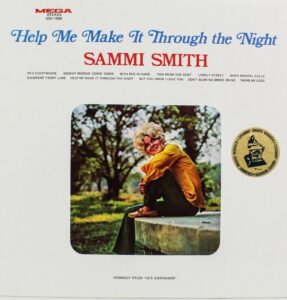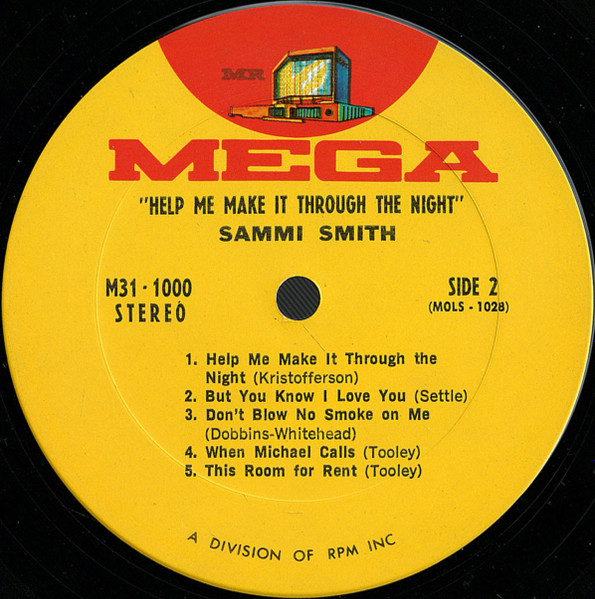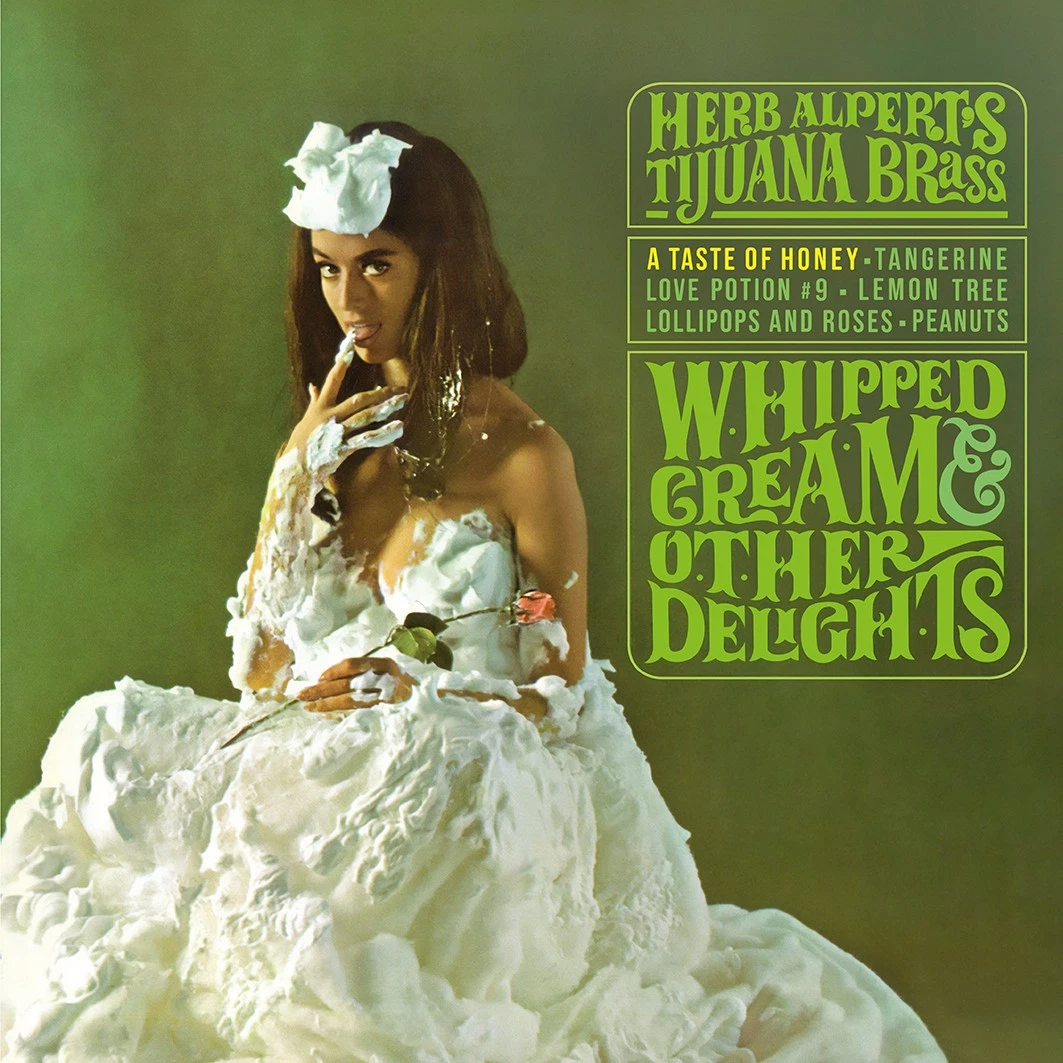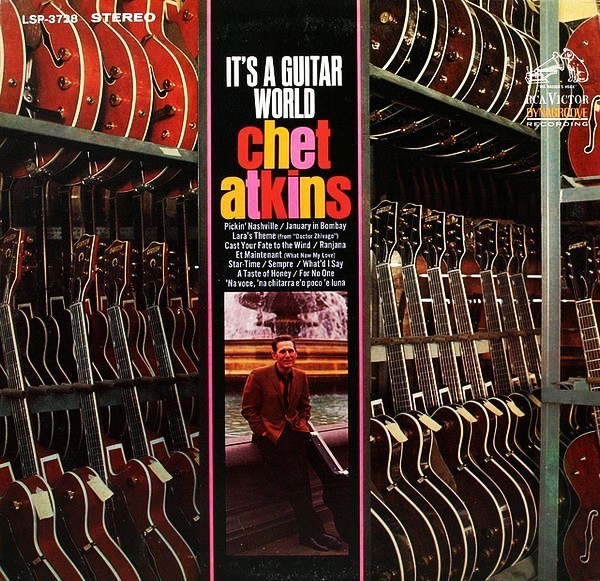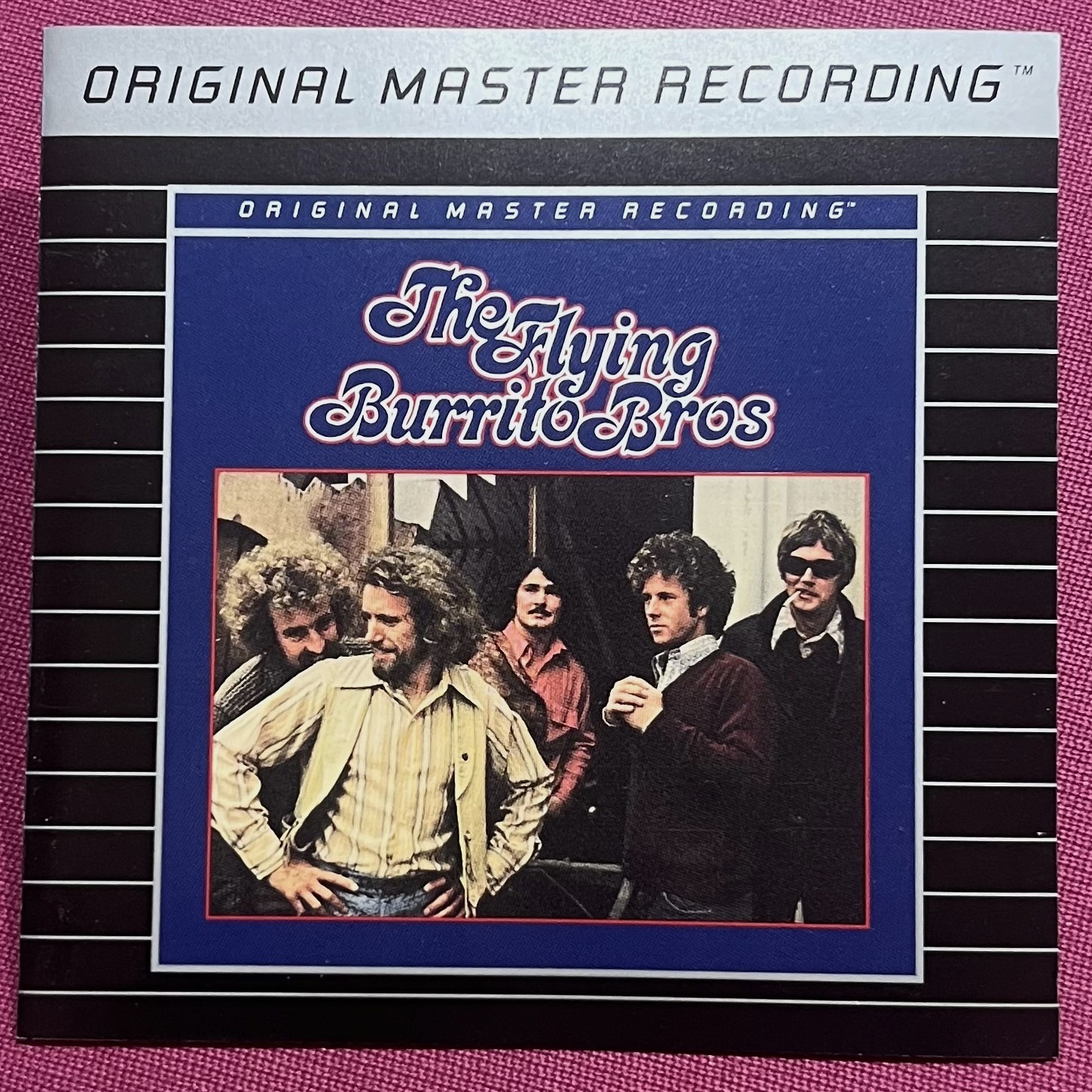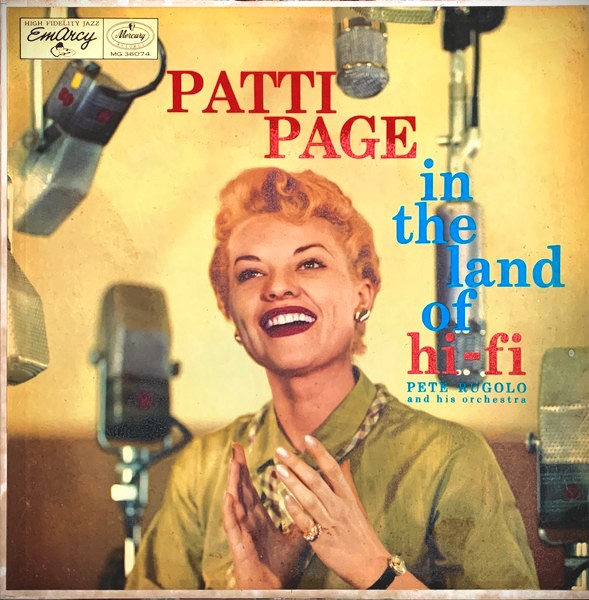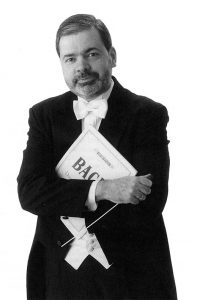Jewel Faye Smith (1943-2005), who went by the name Sammi Smith, was born in Orange, California. Due to her father's military career, she lived in Arizona, Texas, Colorado, and Oklahoma. In 1967 she was discovered in an Oklahoma City nightclub by Johnny Cash's bassist, Marshall Grant, and subsequently she moved to Nashville. With help from Cash, she signed with Columbia records. The result was five singles which are now forgotten. The world discovered Smith in 1970 when she left Columbia for the newly formed Mega records and recorded her debut album, which included her incomparable performance of Kris Kristofferson's "Help Me Make It Through The Night."
Smith was unique among female country singers of the early seventies, as she was one of the very few women inside the outlaw country movement. The outlaw movement consisted of anti-establishment country and country-blues musicians who didn't play by the conservative rules dictated by Nashville's music establishment. They were rebels who partied like rock stars, and performed edgy country, blues, and rock, sometimes with lyrical content that was controversial for the time. Among the movement's pioneers were Willie Nelson, Waylon Jennings, Tony Joe White, and Kris Kristofferson. In keeping with the outlaw tradition, Smith, with her smokey pipes, tackled the new breed of edgier country songs. Her voice had an I've-been-through-a-lot authenticity that was appealing. I'm focusing my spotlight on her debut album, Help Me Make It Through the Night (Mega M31-1000), because it features excellent singing, great songs, superb musicianship, and excellent sound.
You won't be disappointed if you played side one cut two. "There He Goes." The song started life as "There She Goes" when the great Carl Smith (1927-2010) recorded it in 1955. Carl's incredible version is performed in the stripped-down Hank Williams tradition, with a prominent steel guitar, Carl's strummed rhythm guitar, and his very twangy vocal. In 1960, Patsy Cline gave it the country-blues treatment, which was more blues than country. Sammi's reimagining is pure countrypolitan. With its lush strings and plaintive steel, courtesy of the incomparable Weldon Myreck (1938-2014), it reminds me of Ray Price's smooth recordings from the sixties. In short, I really like it.
I also like side one cut three, "With Pen In Hand." Country divorce songs were nothing new in 1970. In 1952, Hank Snow recorded "Married by the Bible, Divorced by the Law," in 1955, Patsy Cline recorded "A Church, A Courtroom, Then Goodbye," and in 1968, Tammy Wynette was hugely successful with "D-I-V-O-R-C-E." I think Sammi could have turned any divorce song into soulful music. "With Pen In Hand," with lyrics by Bobby Goldsboro, was a hit for Johnny Darrell in 1968. Darrell's record strikes me as little more than a forgettable love-gone-wrong song, but Sammi, who infused it with her innate understanding of the blues, turned it into a riveting experience.
Side two opens "Help Me Make It Through The Night," and, of course, this is what made the album a success. While divorce songs were commonplace by 1970, a song about seeking comfort in the arms and in the bed of a total stranger was taboo, especially coming from a woman. It took a gal with guts to record "Help Me Make It Through The Night," but once Sammi normalized the subject matter, other women, like Tammy Wynette and Loretta Lynn, were quick to cover it. I listened to numerous performances, hoping to find somebody else who could do it justice. After hearing Tammy and Loretta, and then Ray Price, Willie Nelson, Elvis Presley, and the song's creator, Kris Kristofferson, I found myself longing for Sammi. However, I was successful in finding somebody who could sing it almost as well. And that person is Dottie West (1932-1991). I found it interesting that Kristofferson had originally offered the song to Dottie, while he was living with her and her husband Bill. She turned it down, because she thought it was too risque. Having enjoyed her performance, I'm anxious to hear the rest of her 1971 album, Careless Hands (RCA LSP 4422), but not before I finish telling you about Sammi!
Not only did Sammi break a huge barrier with a song about loneliness and sexual freedom, she also recorded one of the biggest selling and most loved country crossover records ever created. "Help Me Make It Through The Night" is such a perfectly crafted single that describing how it works its magic isn't easy. It also features demo-quality sound, which makes it downright addictive. Creating something this tasty takes a group of seriously talented musicians. A great string arrangement is another part of its charm. (Dottie's recording has no strings.) Although I often find strings on pop records problematic, both musically and sonically, arranger Bill Walker (1927-2022) deserves praise for creating a string arrangement that enhances the song, rather than smothering it. Another key ingredient of this tasty stew is the piano. The piano doesn't even enter until the song is nearly finished, but it's an important piece of a complex two minute and thirty two second puzzle. I'm getting ahead of myself, so it's time to break this masterpiece down.
The song opens with Roy Husky's thumping string bass and Wayne Moss's lonely sounding acoustic guitar. They are quickly met by the strings. Sammi's vocal, which perfectly compliments Moss's guitar, enters at ten seconds. From this point on you're swept into a world of heartbreak and magic. The rhythm is carried by Jerry Carrigan's simple yet perfect drumming. As Sammi sings, the strings continue playing. The cellos on the right are predominant early on, but as Sammi sings the famous words "come and lay down by my side," violins are heard in stunning stereo. I can't think of another pop or country recording where the strings are the embodiment of perfect stereo. The piano finally makes its entry as Sammi hums the melody. As the song closes, she repeats the words "and it's sad to be alone, help me make it through the night." As I stated earlier, this is a hard song to analyze, because it's so heartbreaking that I always fall into its trap. It also has a special ingredient that deserves mention. It's a clave. I'm fascinated by how a little wooden clink adds so much to the music. If you play the LP with a fast moving coil, the clave sounds amazingly real. Hats off to arranger and conductor (as he's referred to on the album's liner notes) Walker for his musical vision.
Side two cut two is a cover of The First Edition's "But You Know I Love You" that rivals the original. I could not have imagined anybody other than Kenny Rogers singing it, but Sammi sings it just as well. And hot damn! Kenny didn't have a steel guitar! The twangmaster is again the incredible Weldon Myreck, the man who provided the vitamin twang on Connie Smith's 1964 classic "Once a Day." Although the cut opens with a beautifully picked acoustic guitar, Myreck steals the show with his insanely fine twanging. Jerry Carrigan's drums sound huge, driving, and just plain wonderful. And after having my heart ripped out by the last cut, this familiar feel-good song about a traveling musician who misses his sweetheart feels awfully nice. The song has been covered by countless artists. I figured that Waylon Jennings, Skeeter Davis, and Dolly Parton could've done it justice, but they were disappointing. The song was written by First Edition guitarist Mike Settle.
Cut three is guaranteed to get you off your butt. It's called "Don't Blow No Smoke On Me," and there's nothing deep about it. It's just plain fun. I love the way this band sounds when they're allowed to rock out. The song opens with Myreck playing lead guitar and Carrigan driving the beat. The phrase "crank this mutha up" applies to this song. This song is also a strong reminder that some of the greatest lead guitarists play steel guitars.
I really like cut four. It's called "When Michael Calls." It's a song about a cheating man, who predictably comes back when "his new love ain't new anymore." The lyrics are simple, but soulful Sammi and the great musicians make it work. And, like the title cut, the string arrangement is stunning. Myreck is still playing that fine steel, but this time he's tucked into the strings. If you're looking for an excuse to cut the rug, this one's a perfect two-step. The songwriter is Canadian Jannette Tooley. I couldn't find any information on Tooley, but she wrote three of the songs on the album.
Playing this record in its entirety is a nice experience, especially if you're in the mood for a tasty slice of early 70s country. The production and the engineering are top notch. I went through a number of copies before I found a great one, but the effort was rewarding. This is a great sounding record, and the title cut is a sonic marvel. Consider playing a genuine classic like this for your audiophile friends. Here's a great sounding album, that's not Pink Floyd, with a song that everybody loves, and one that most music lovers have never heard on a high end system.
Mega Records isn't exactly a label that collectors talk about. This album was the label's debut, and its original title was He's Everywhere, which was also the first single pulled from the album. Sammi was Mega's biggest artist. The label also had success with the prog-pop "Joy" by Apollo 100, a fun single that reminds me of something that Keith Emmerson would have cooked up.
While writing I was constantly reminding myself that this record isn't a Monument record. It was just made by the folks at Monument. Monument made great records, and great sounding records. The big hit is a Kristofferson song, and Kristofferson, whose early albums I like a lot, are on Monument. I love Tony Joe White, and his records are on Monument. "This record is on Mega" is what I kept on saying to myself. This album was recorded at the Monument Studio in May of 1970. The superb engineering is credited to Tommy Strong, and the album's producer was the great recording engineer Jim Malloy. Both of them worked for RCA before they went to work for Monument.
And what about Sammi's other albums? Believe me, I'd like to try them. I used to have her second album Lonesome (Mega M31-0007), but I didn't enjoy it, so I got rid of it long ago. Today I wish I still had it, because I'd probably hear it differently. As part of my research, I sampled cuts from her third album, Something Old, Something New, Something Blue (Mega M31-1011) and found myself enjoying the song "Billy Jack." The dobro, the steel guitar, and Sammi sound mighty fine. HERE.
What more can I say? Sammi Smith was a fine singer, who produced a fine debut album. She deserves to be remembered.





